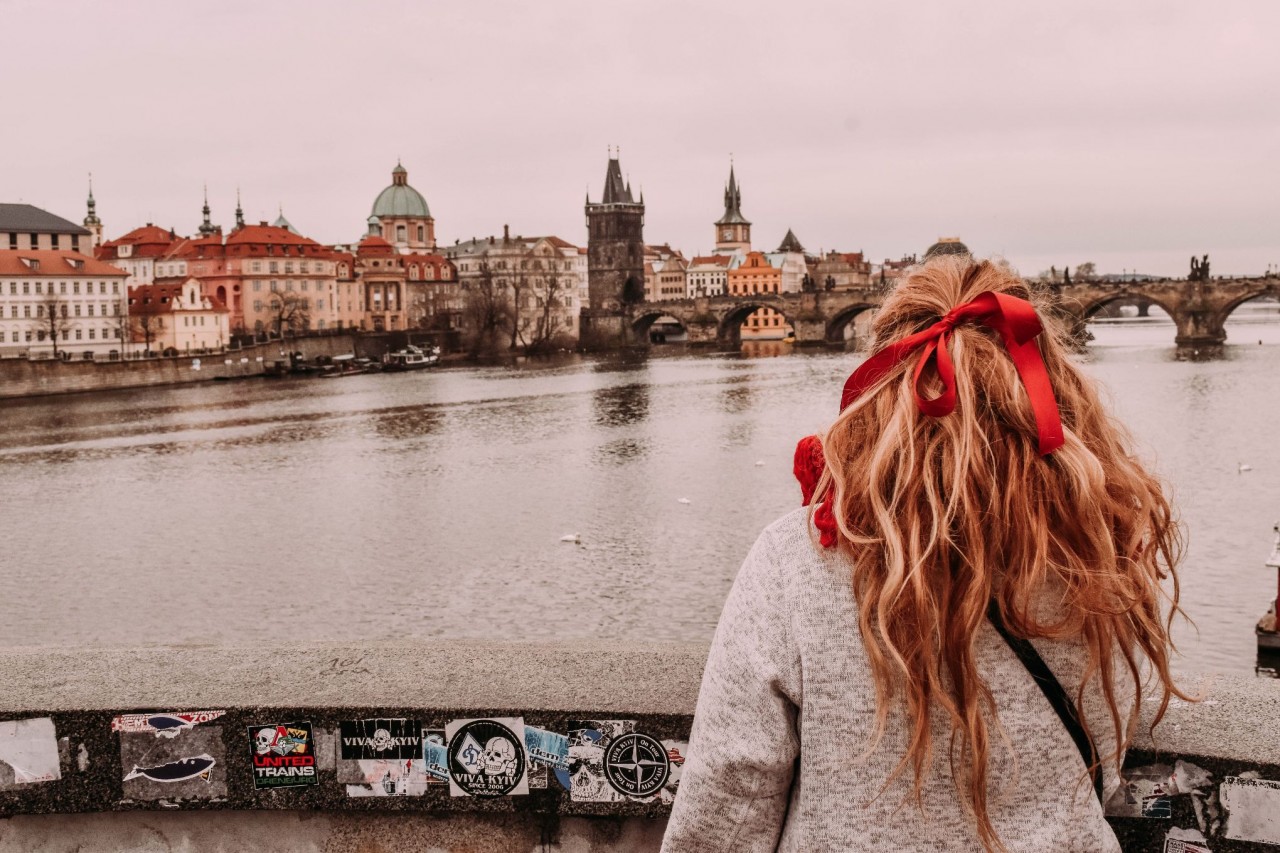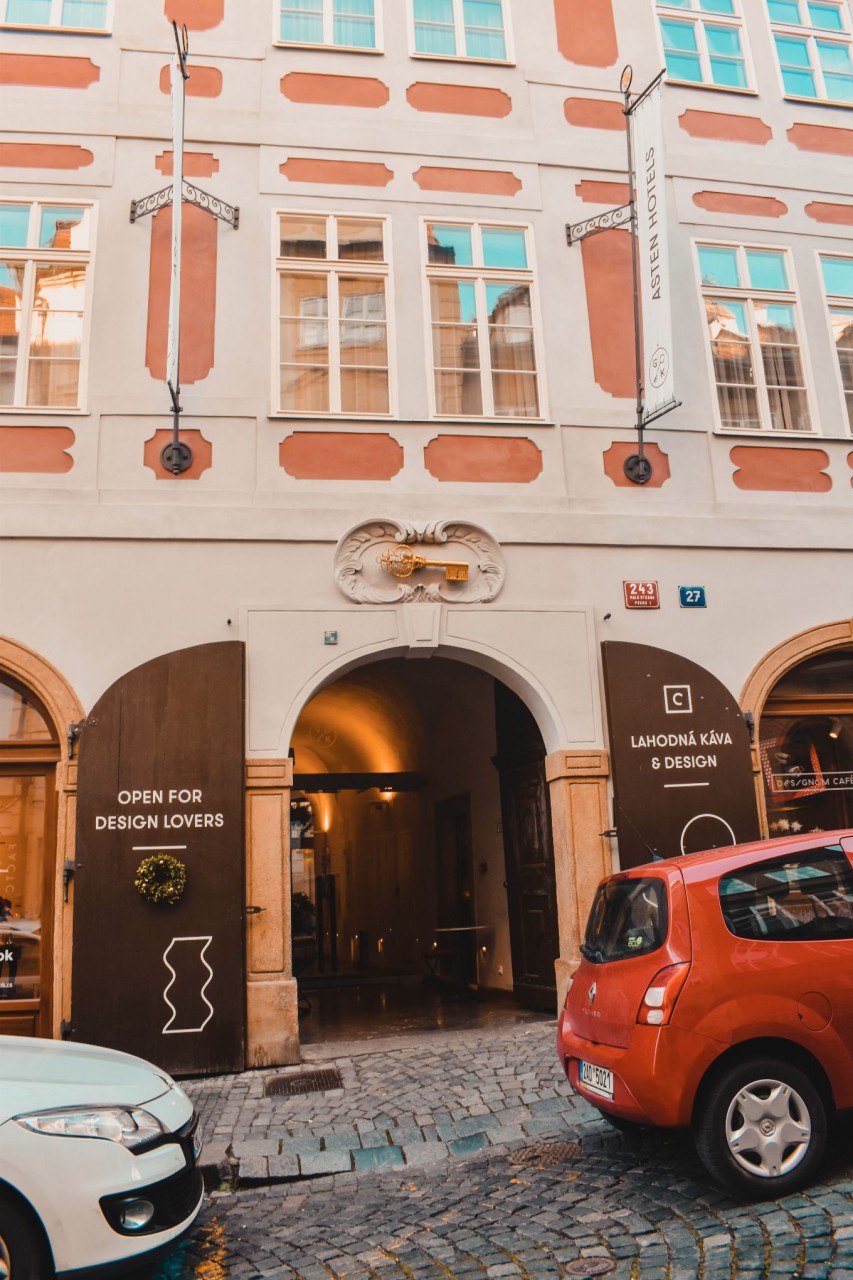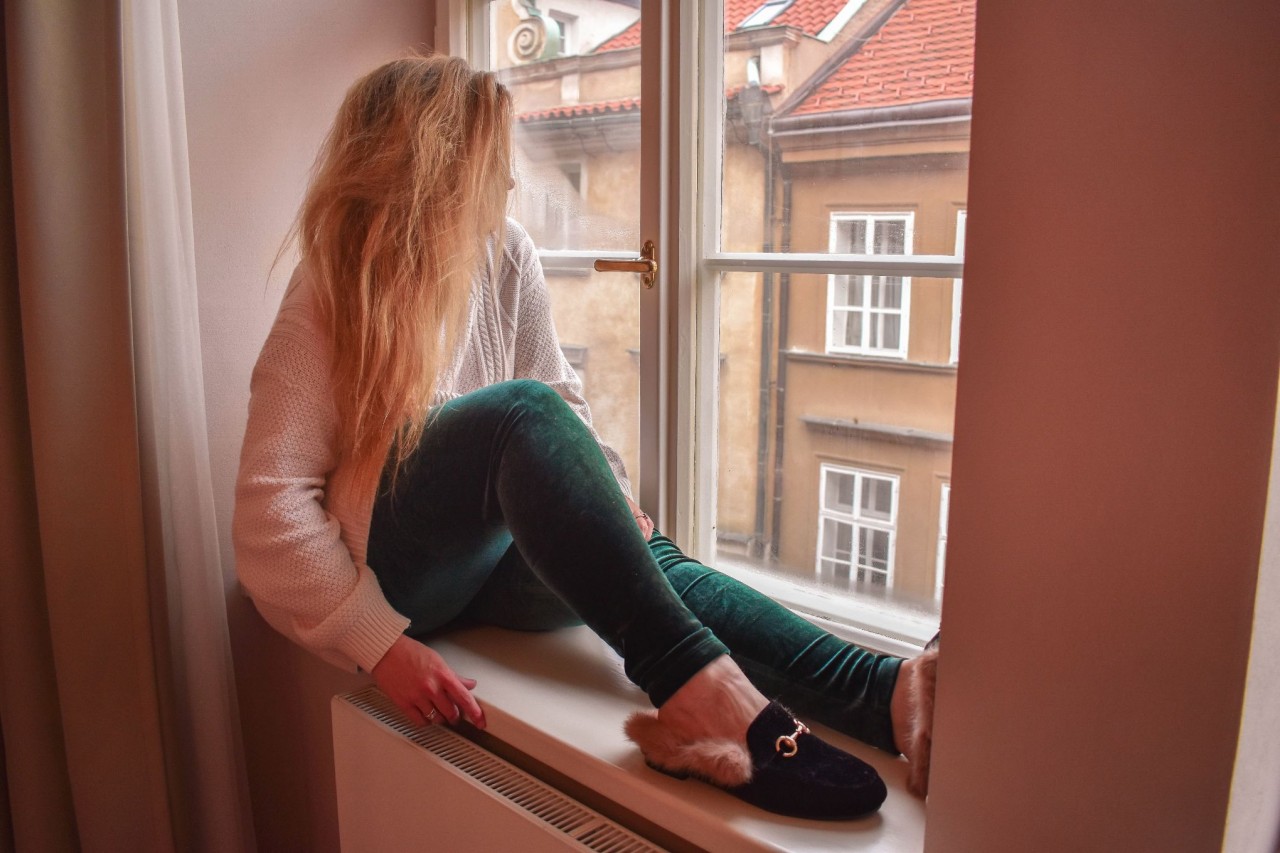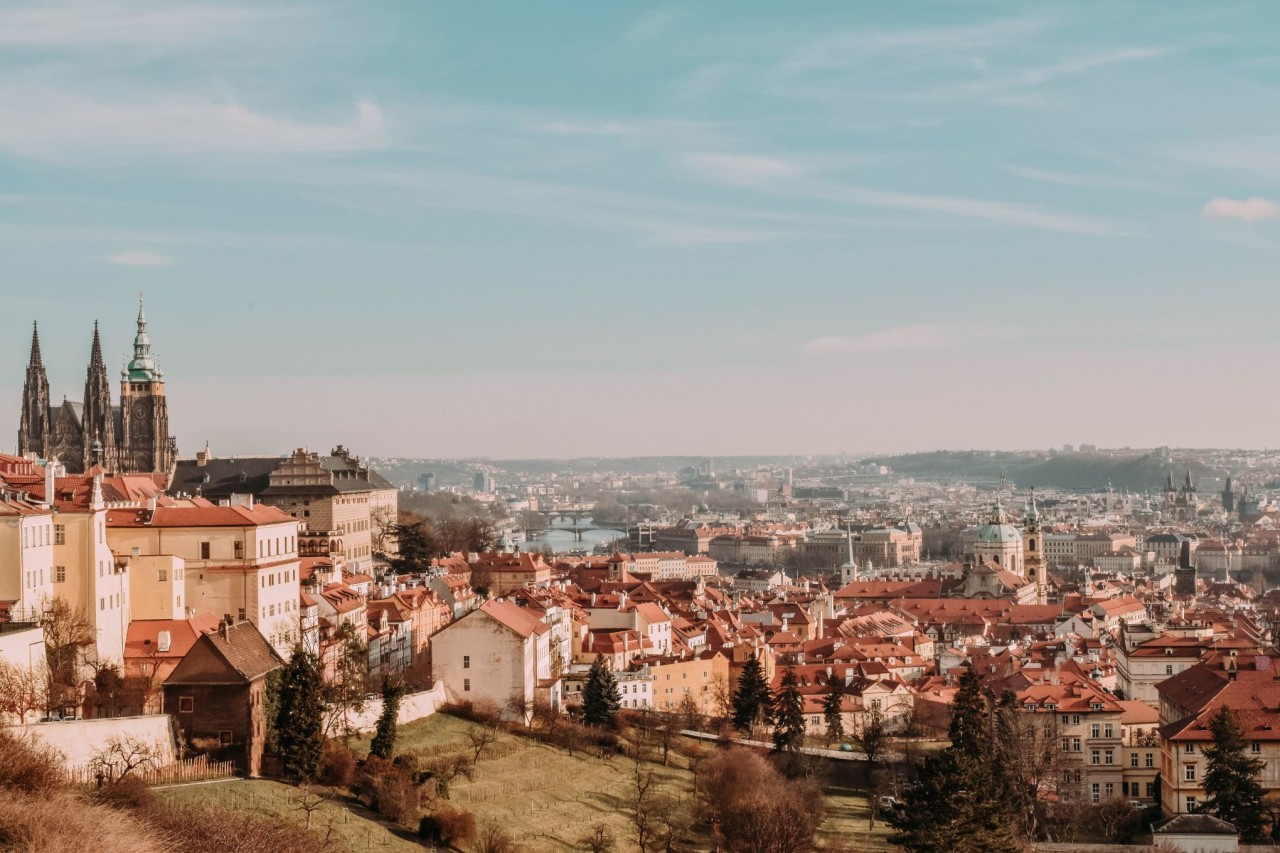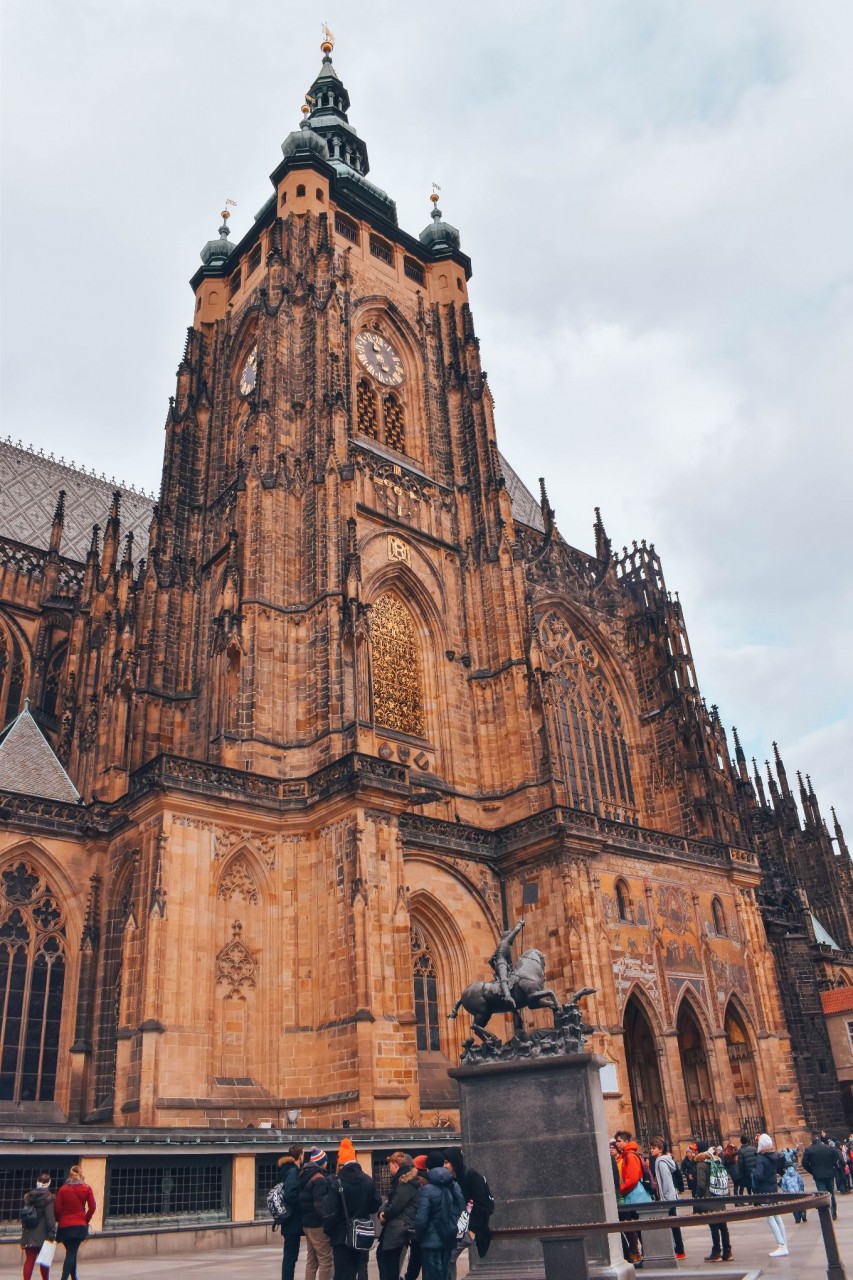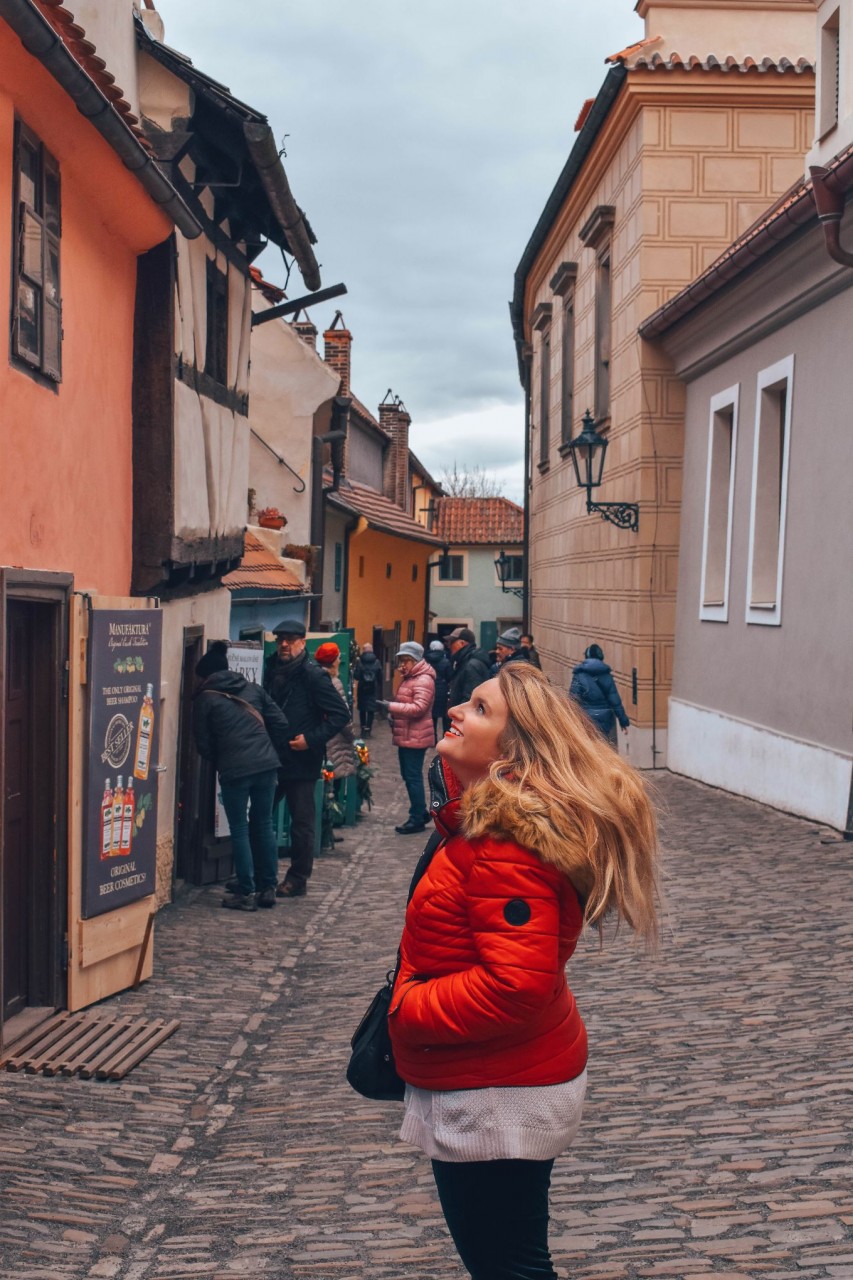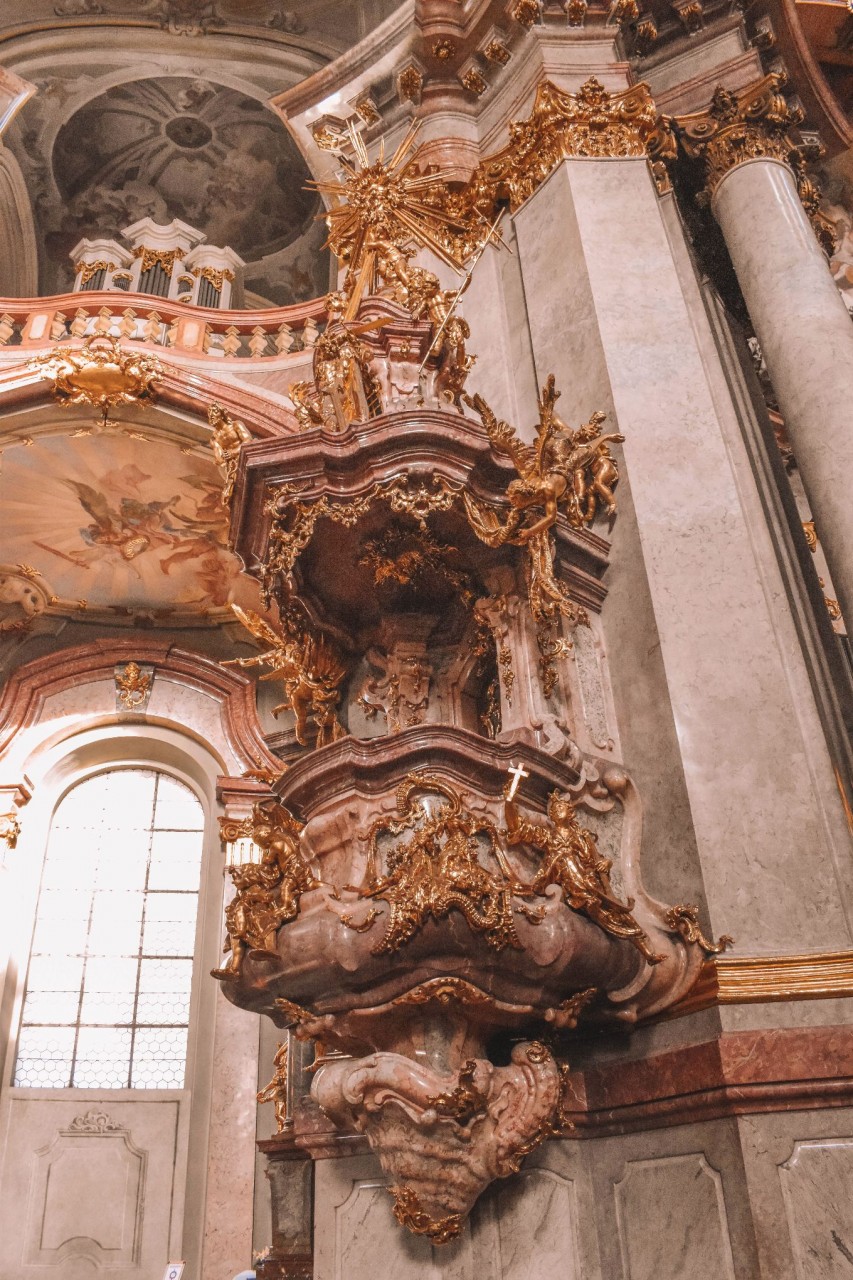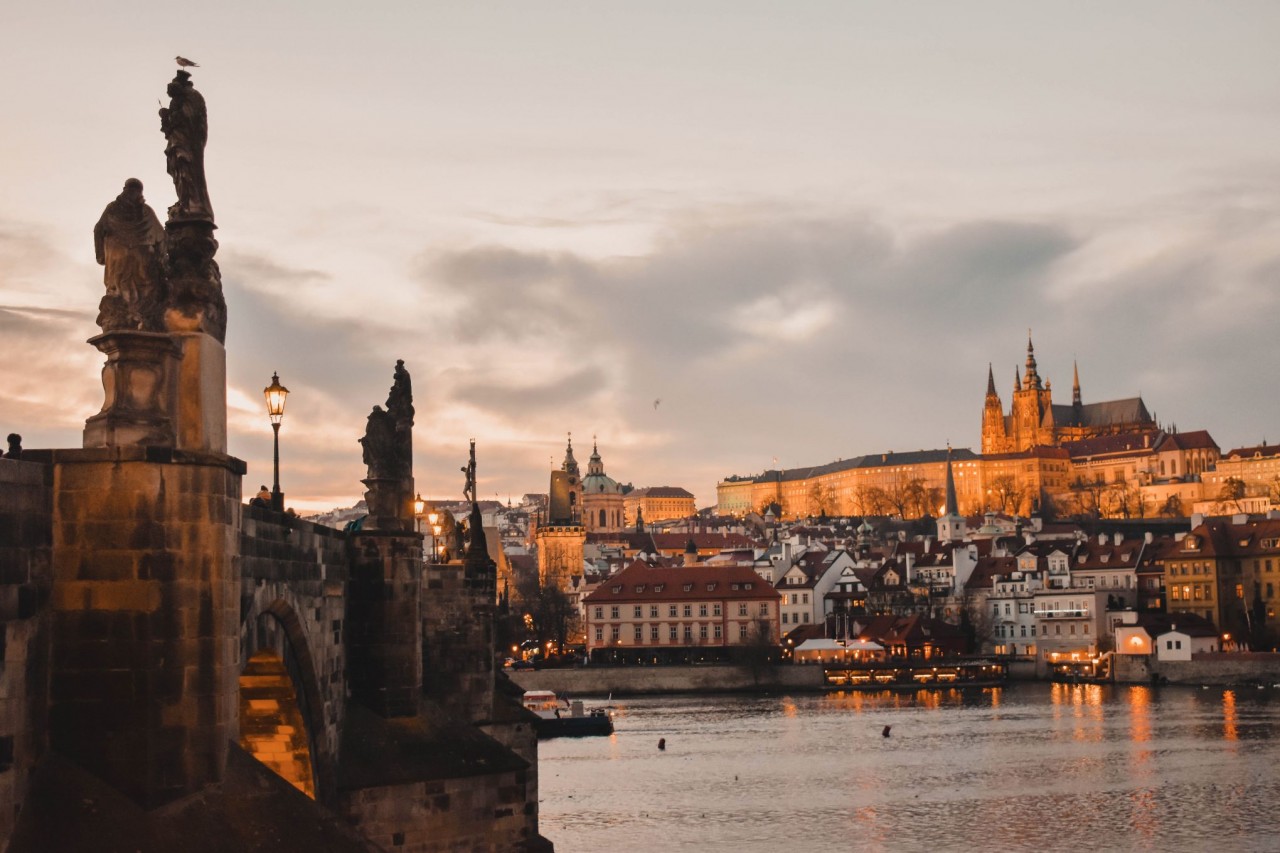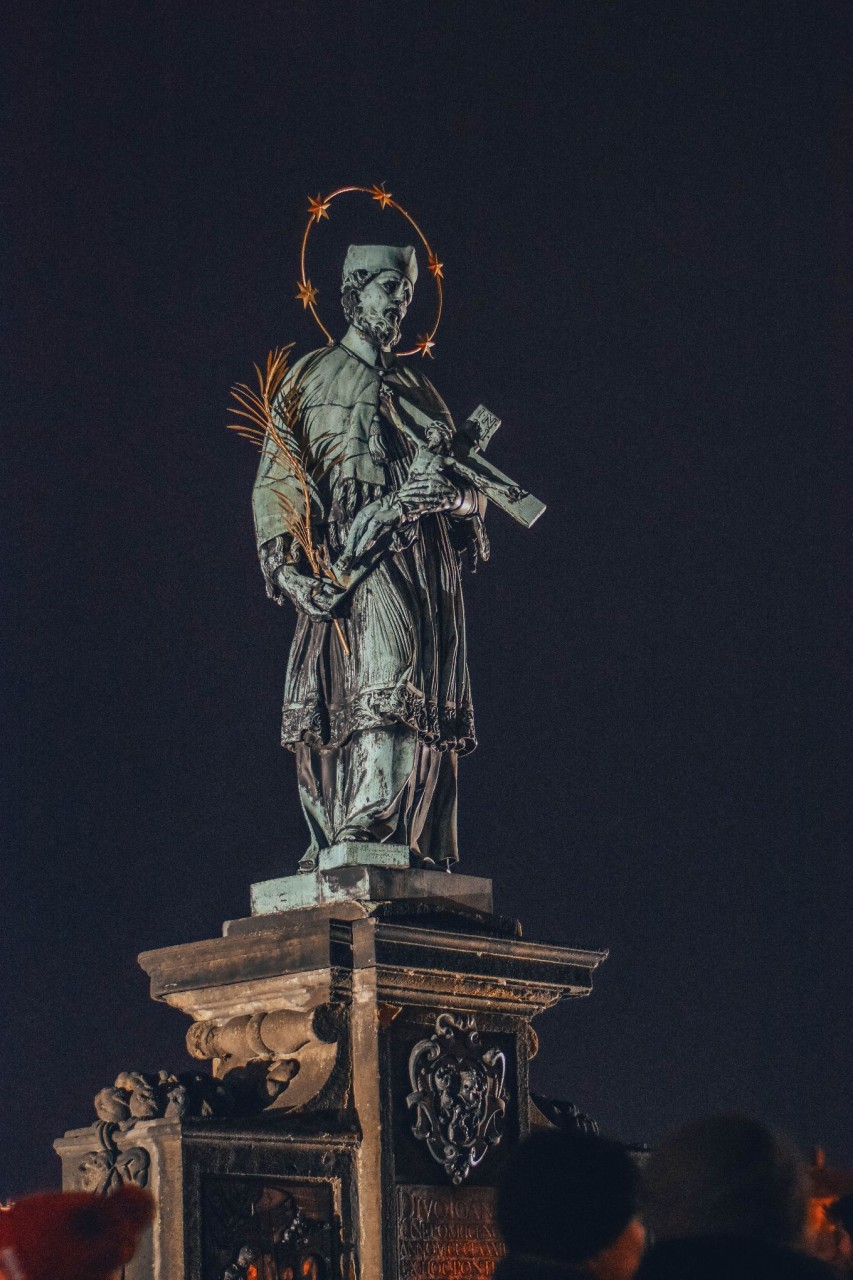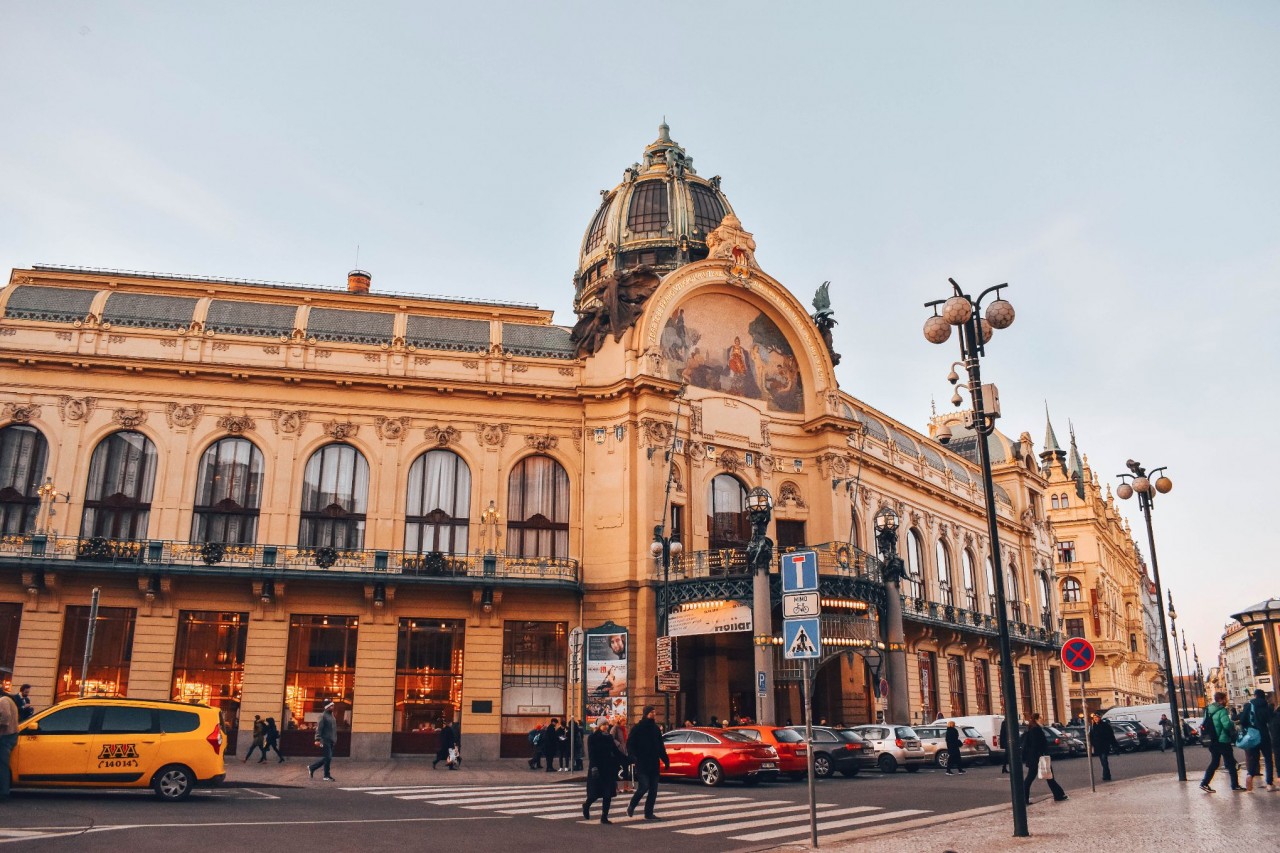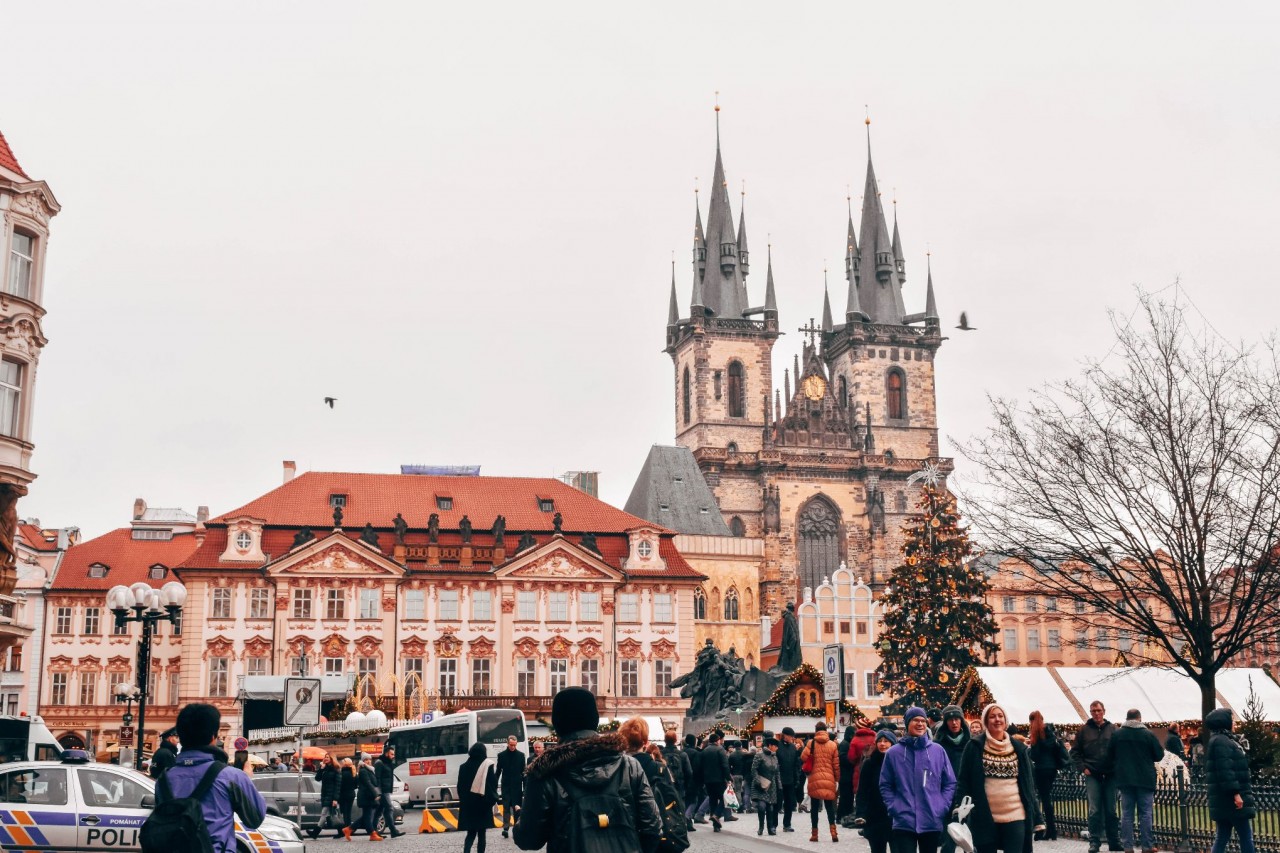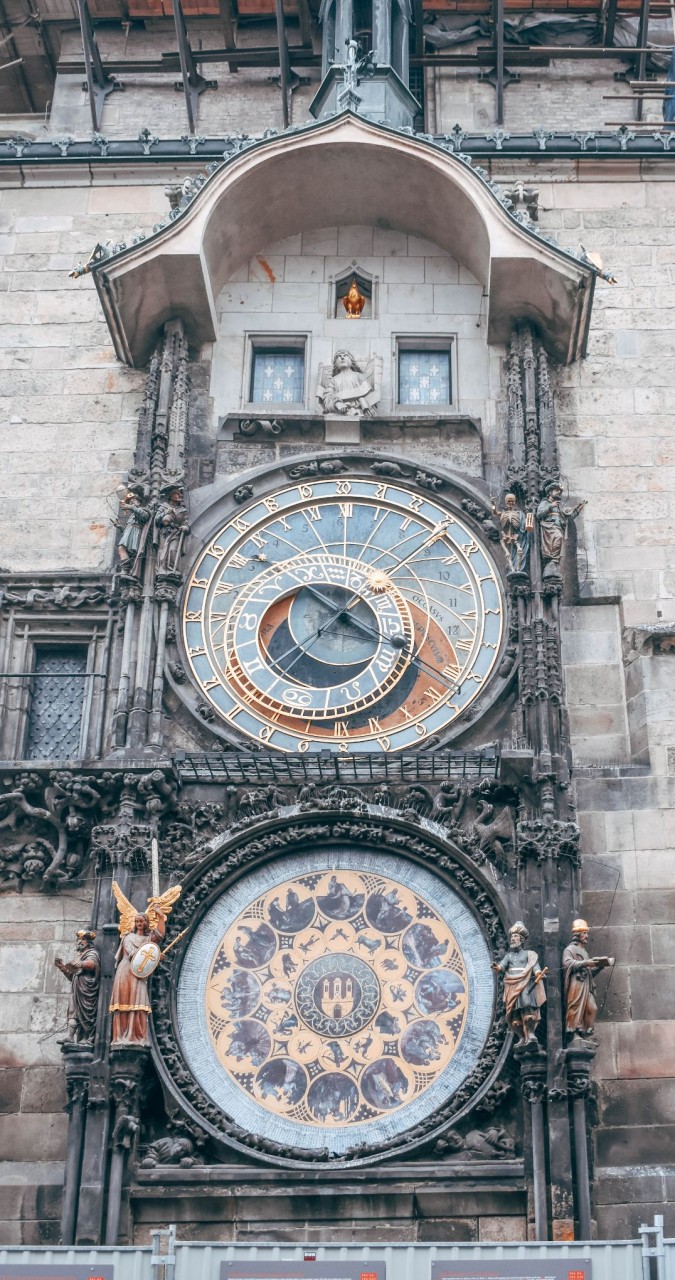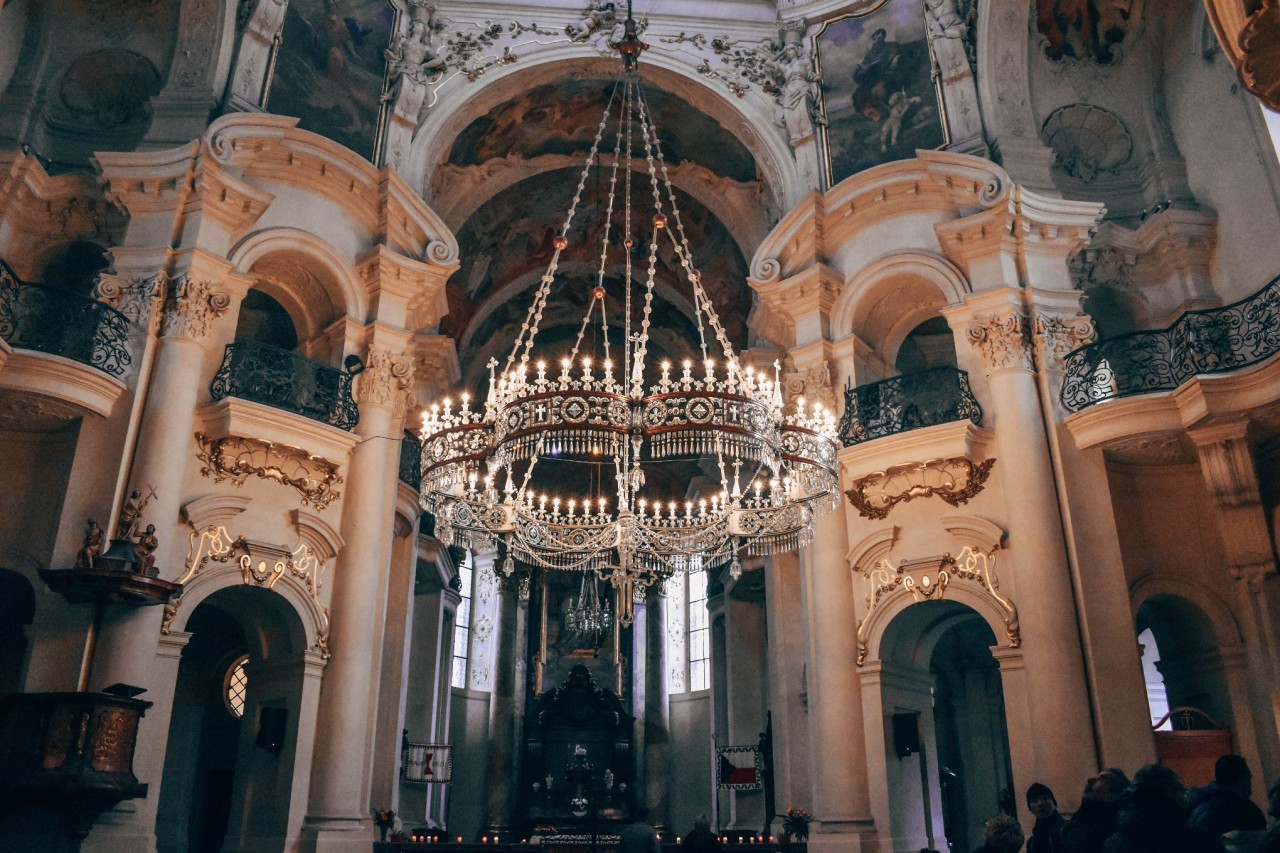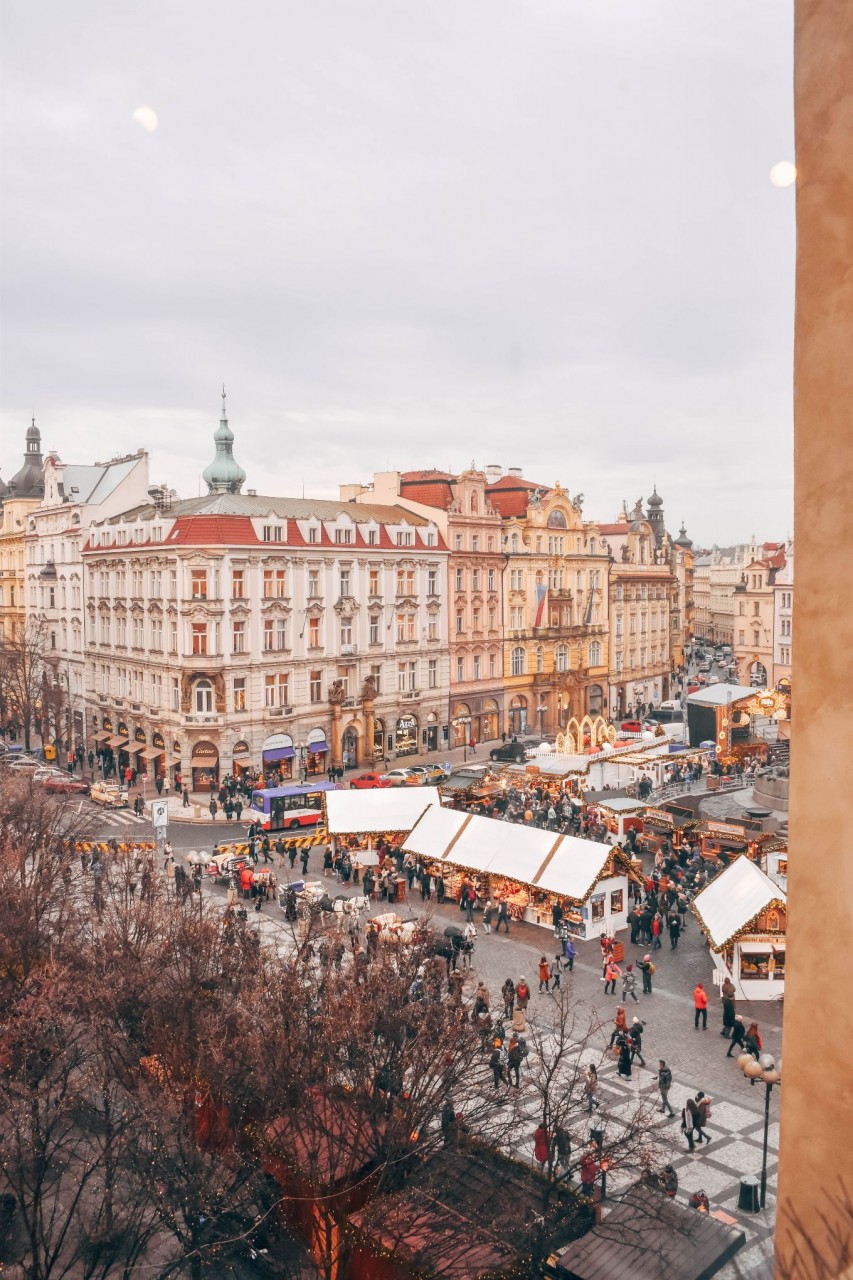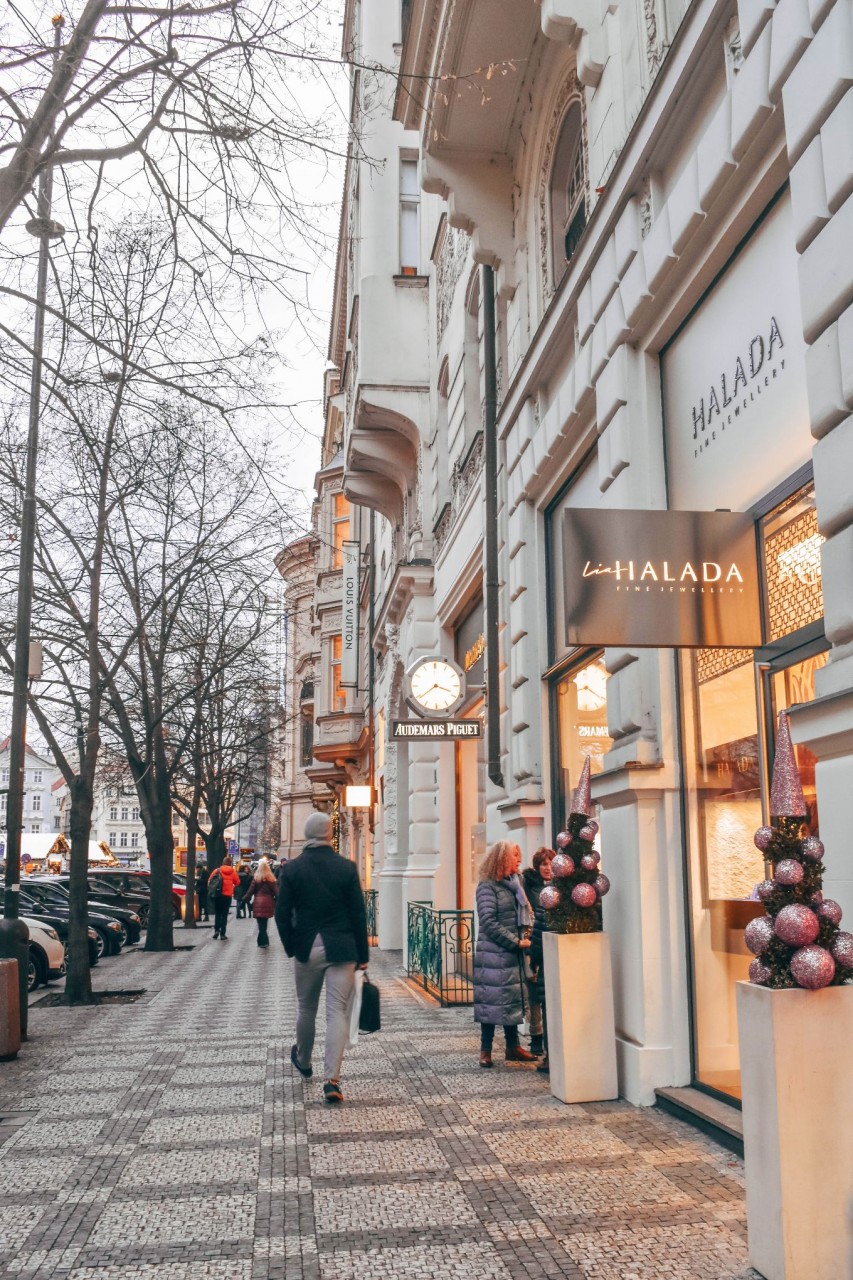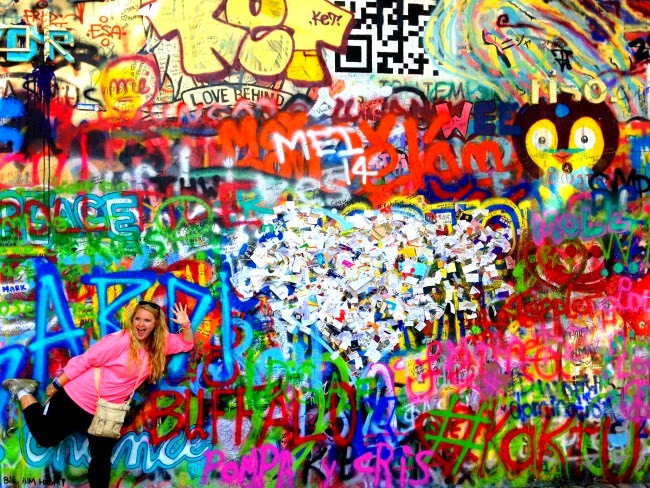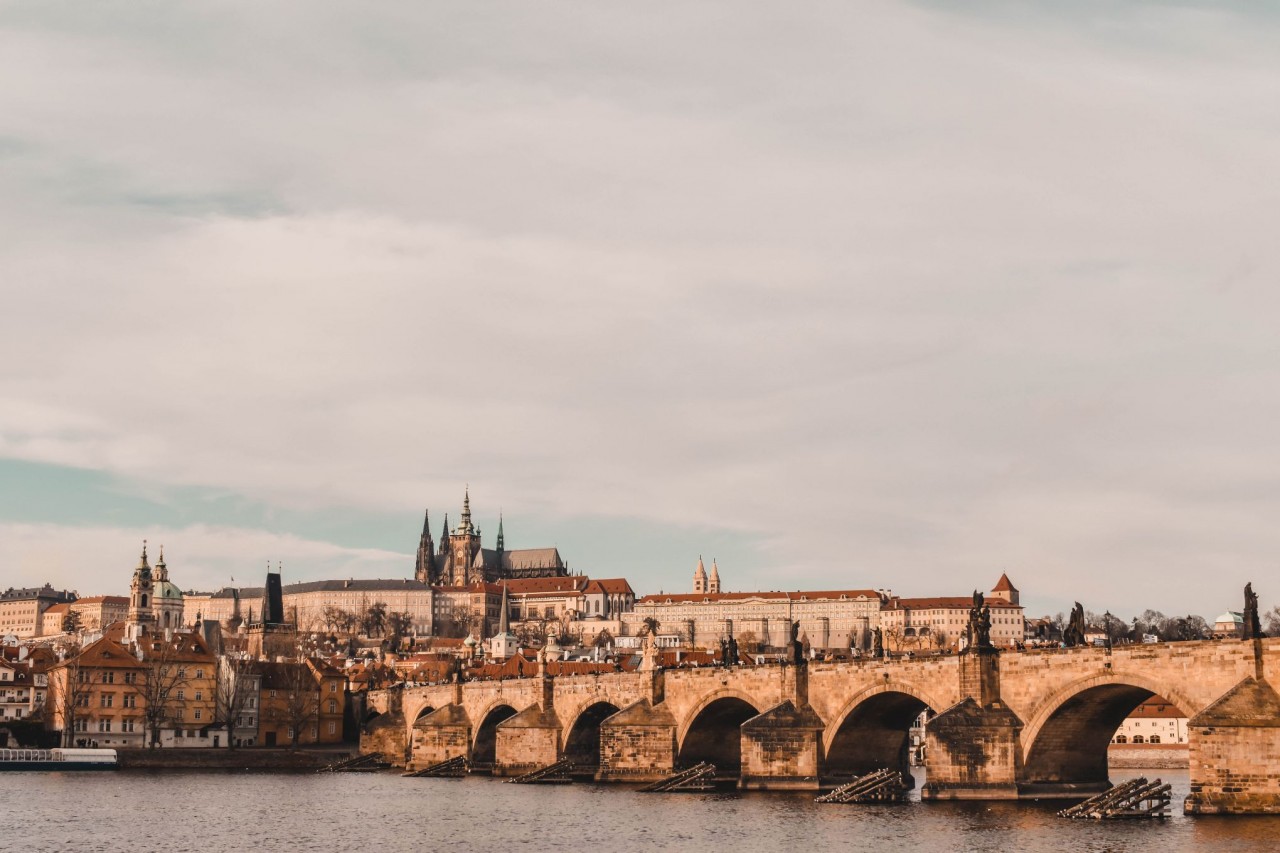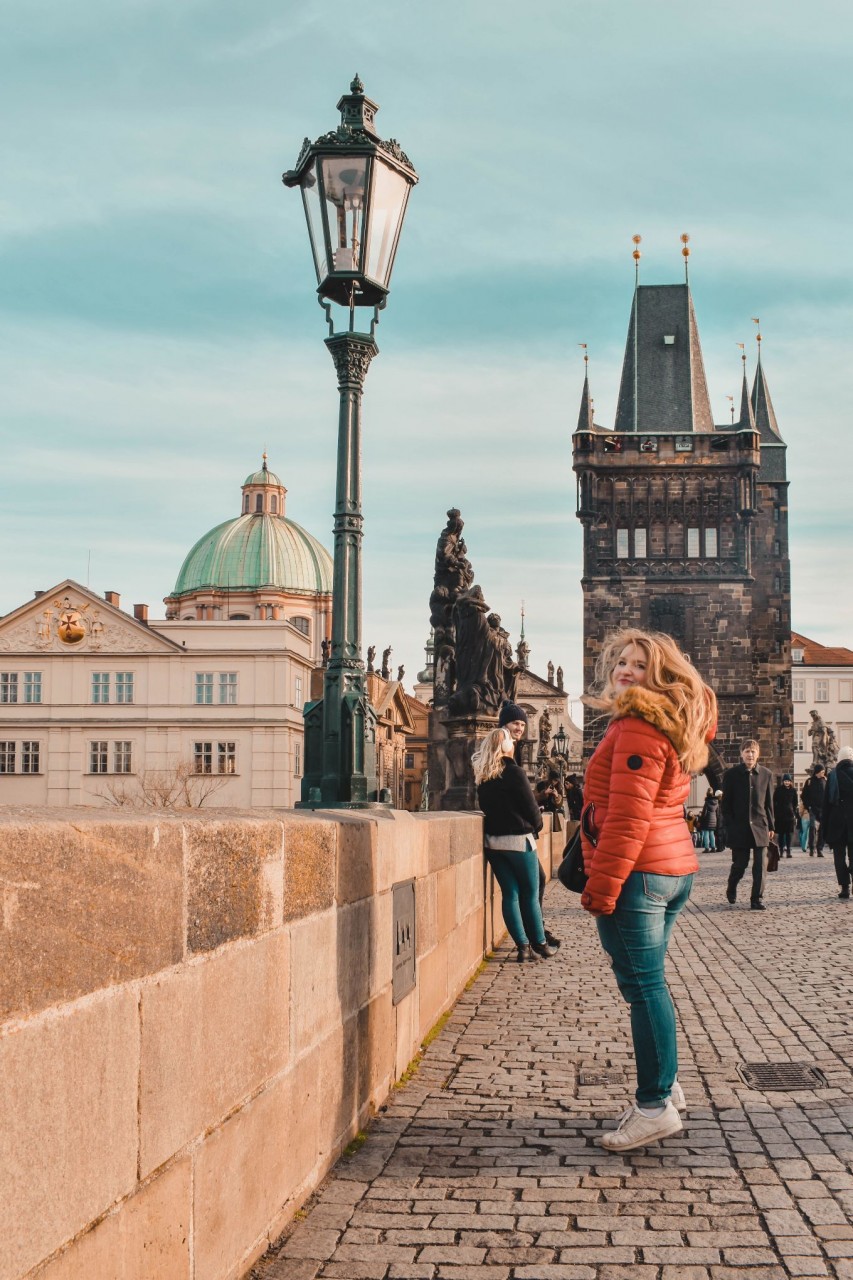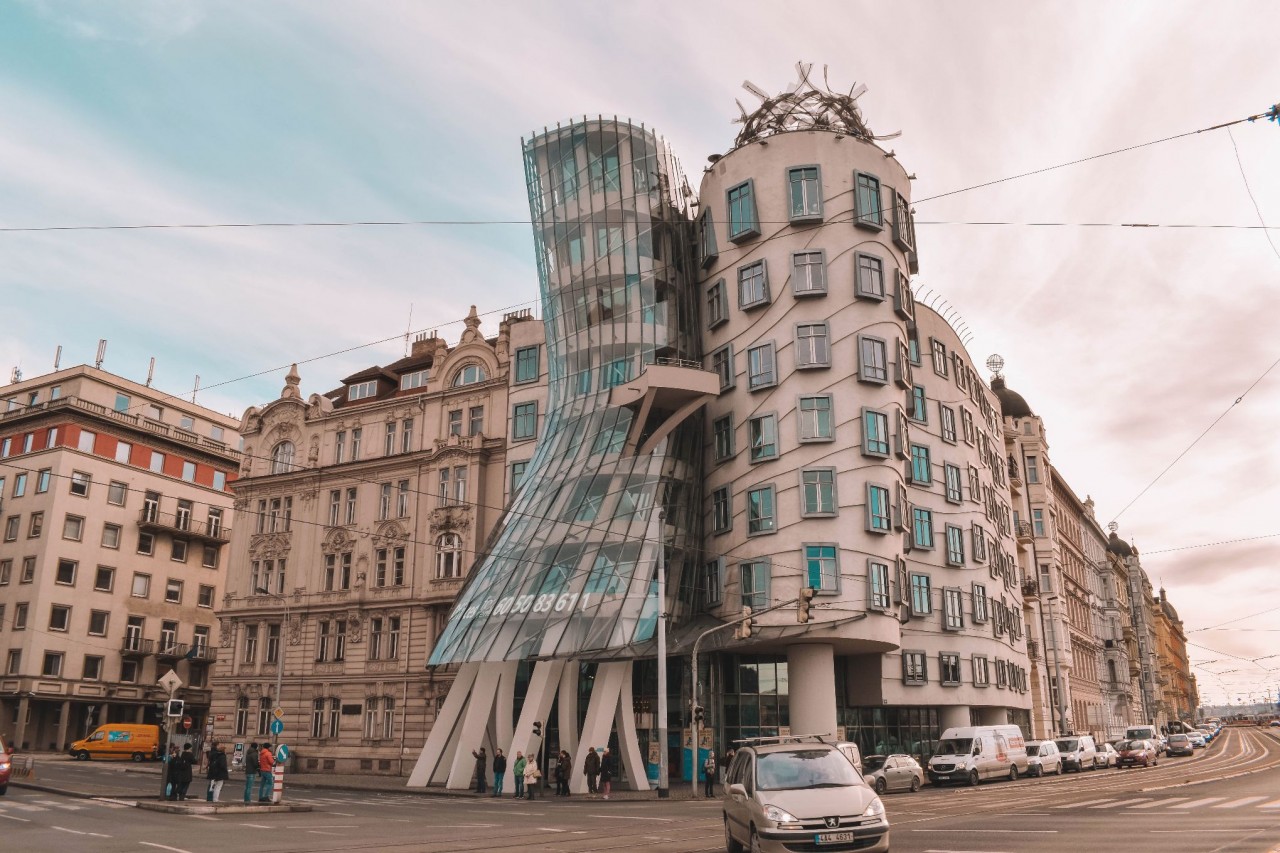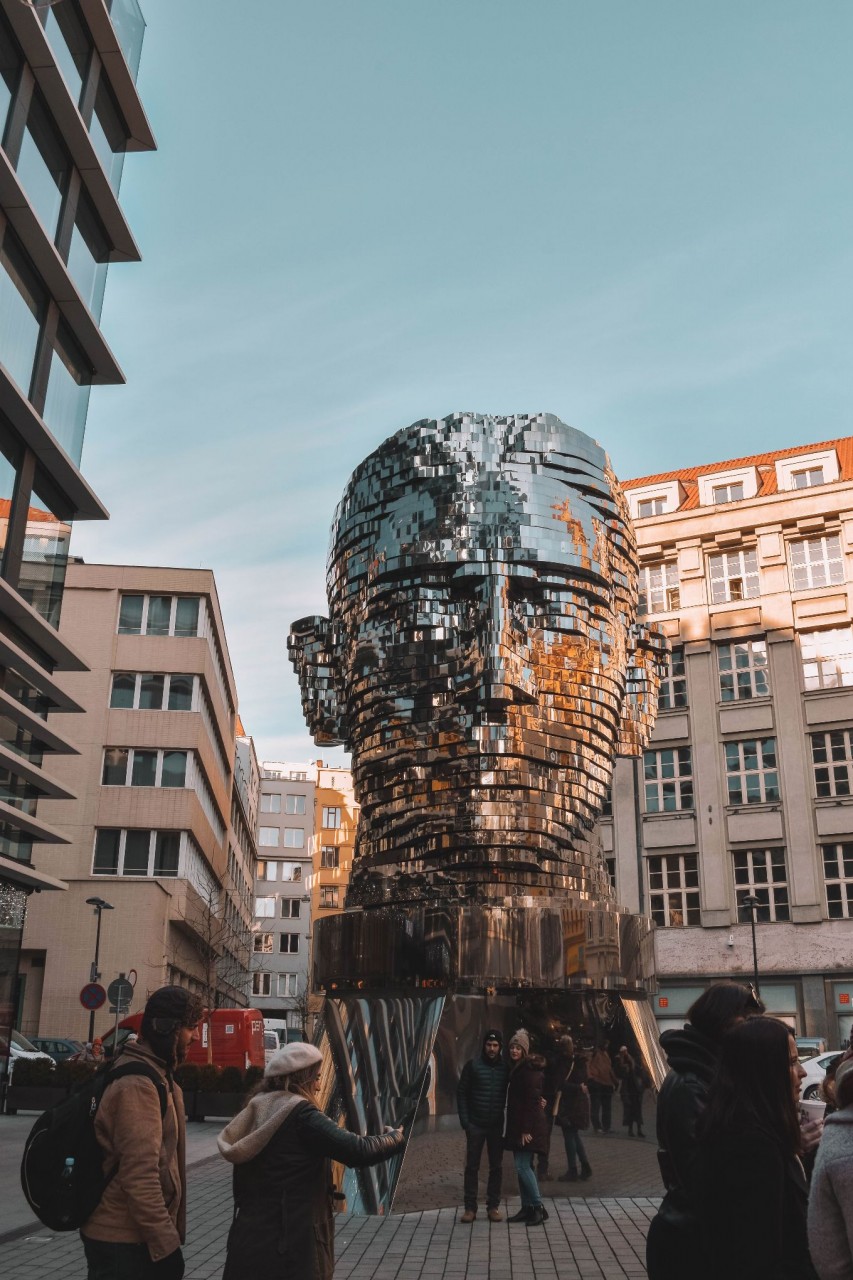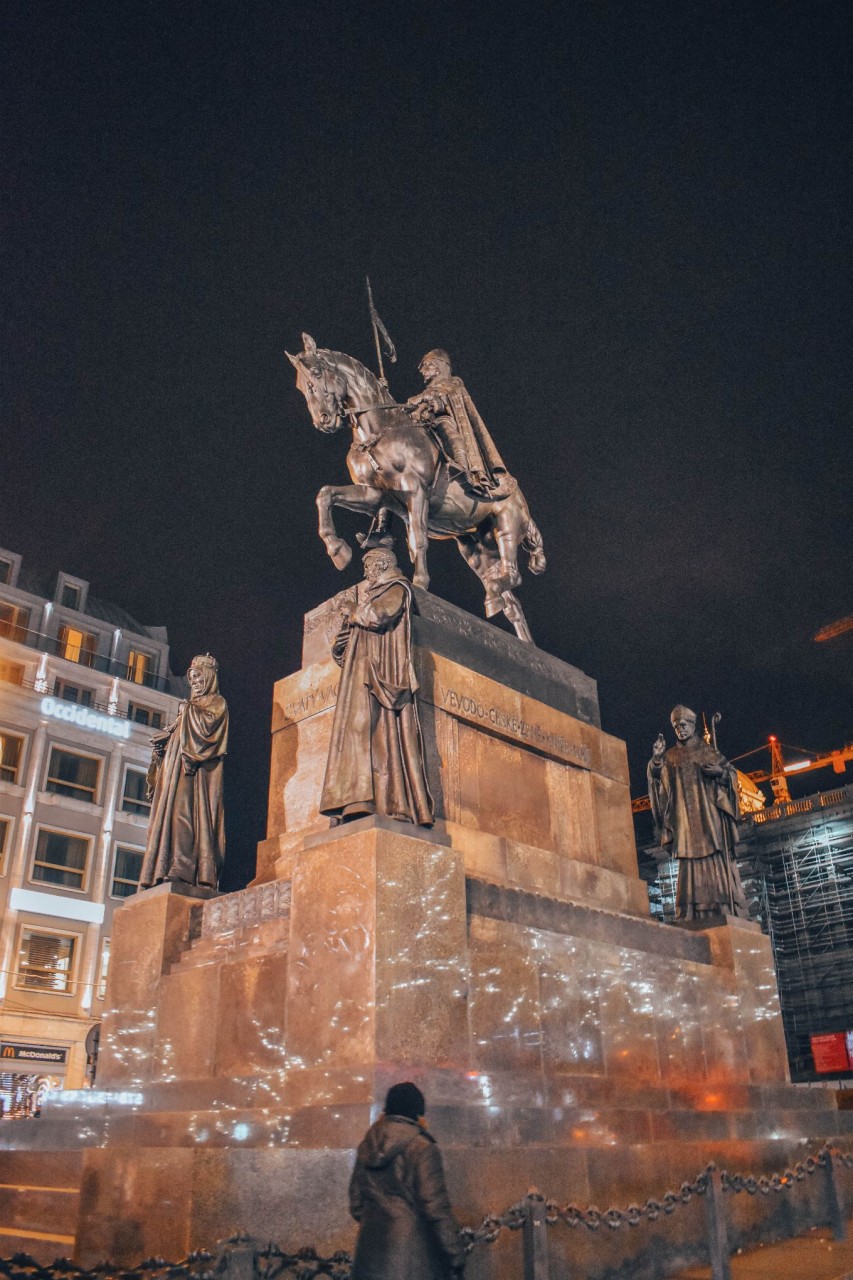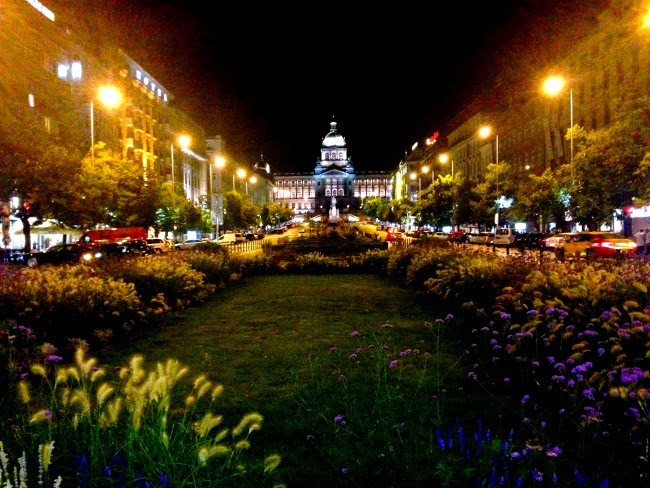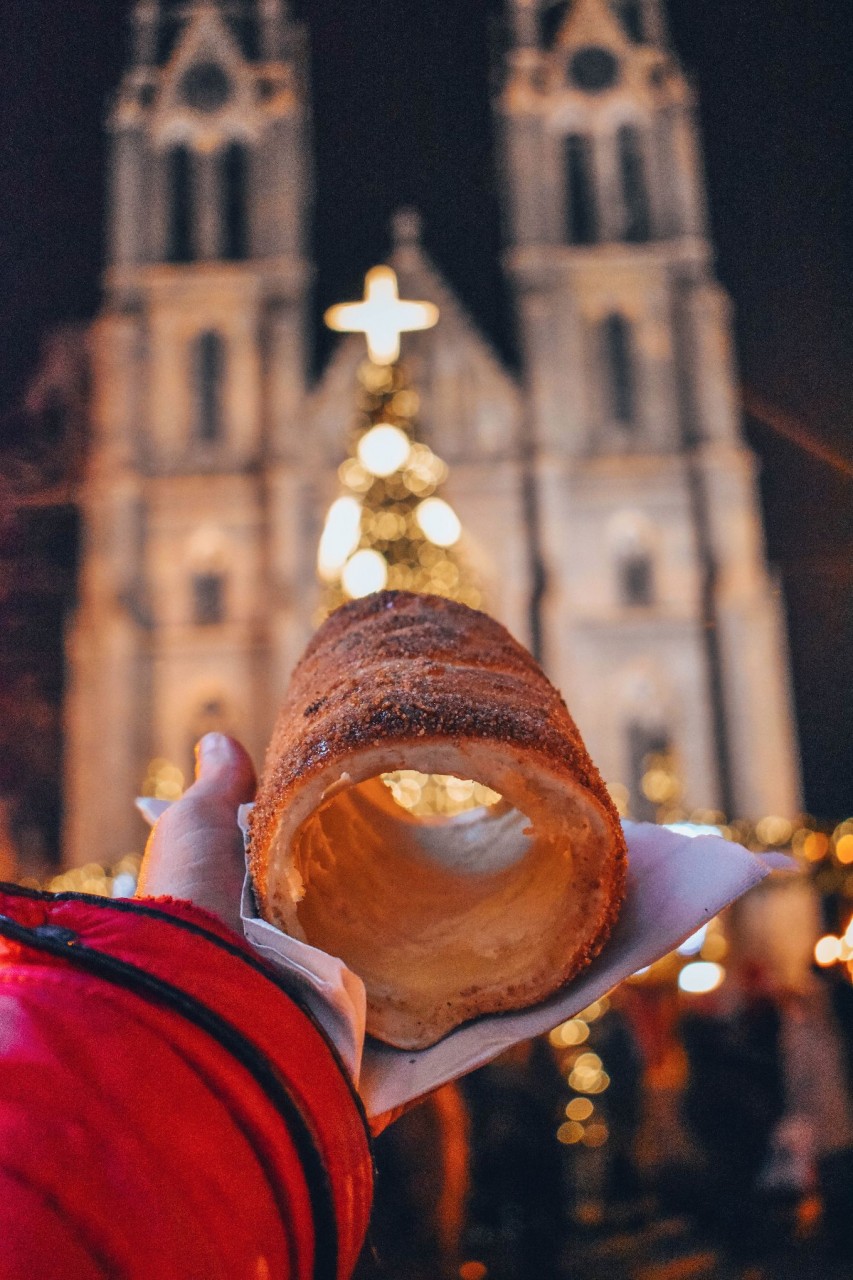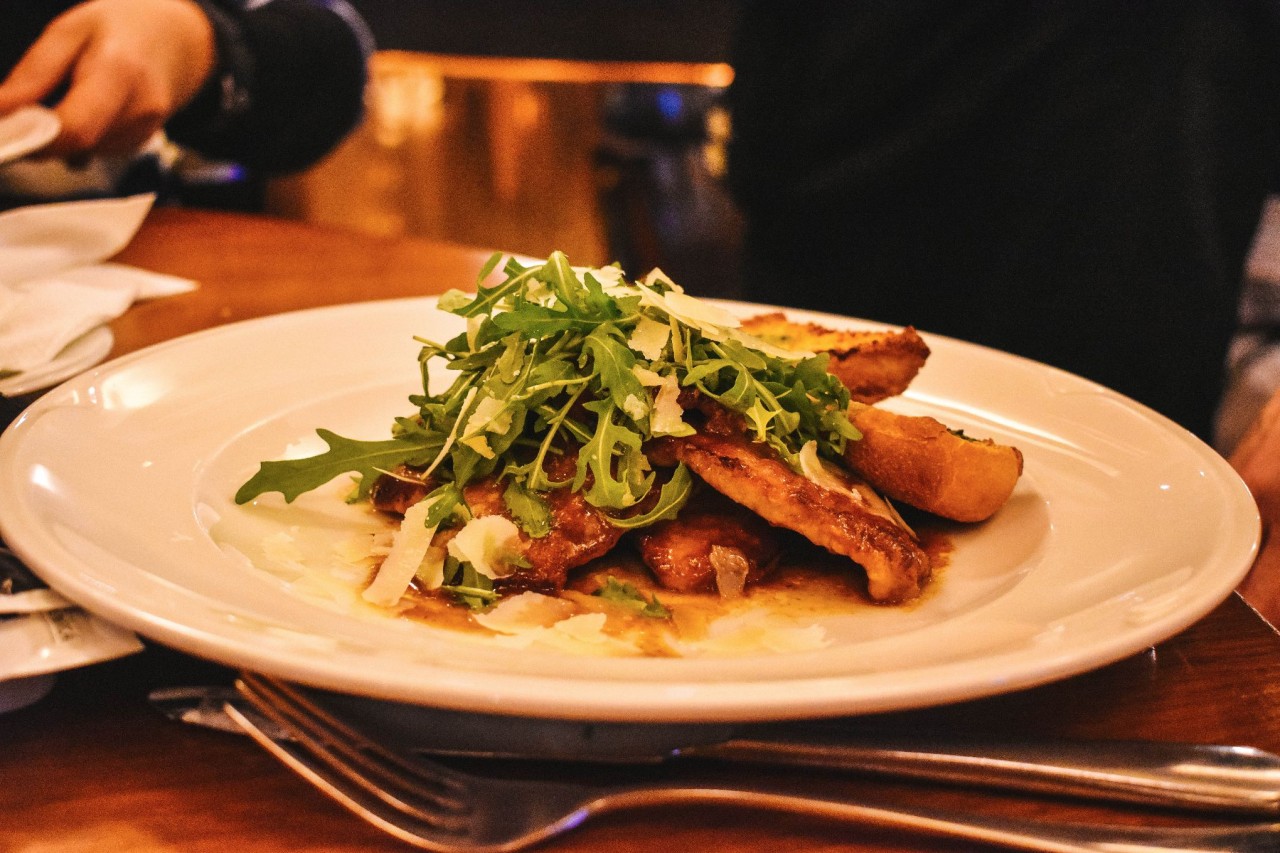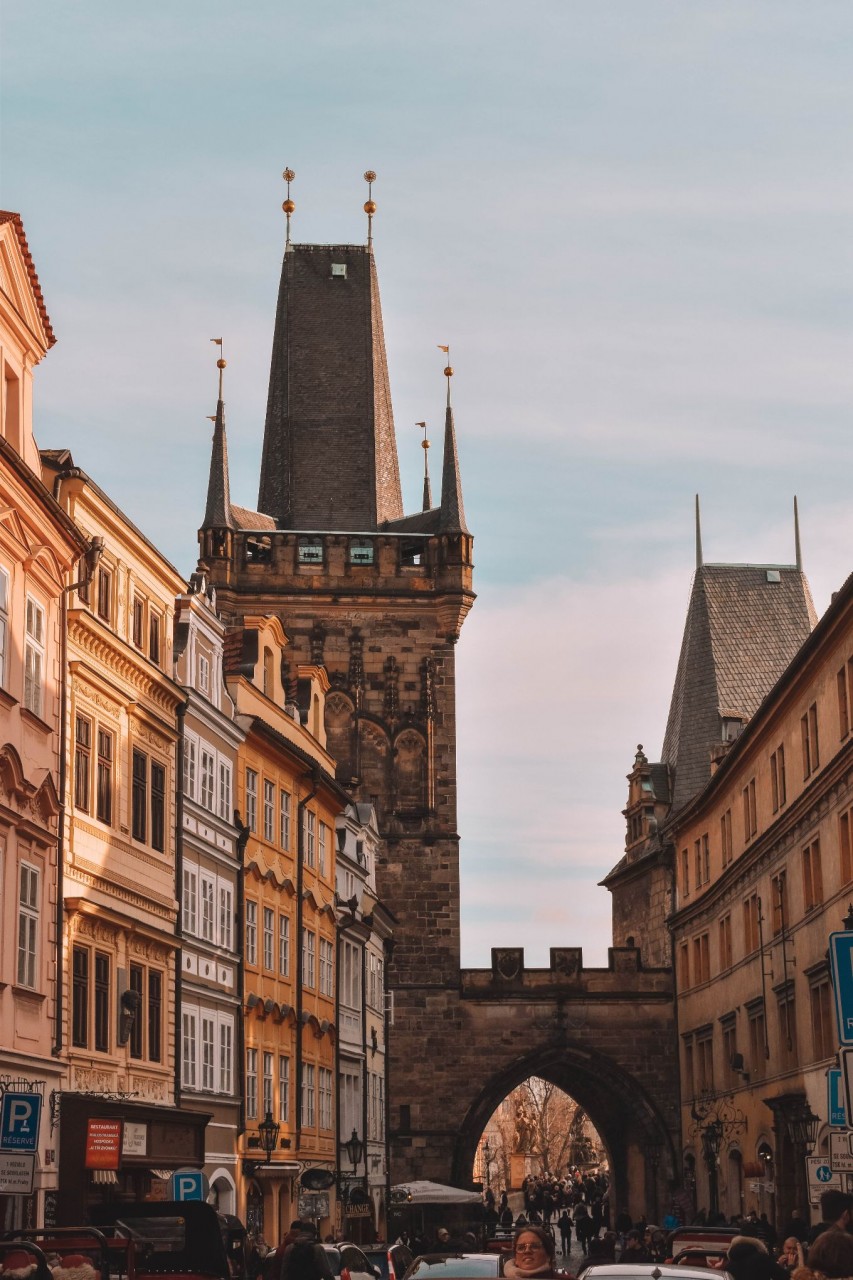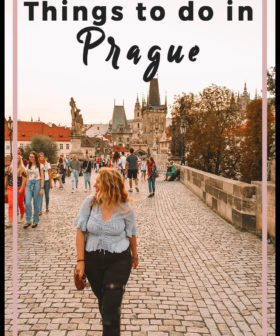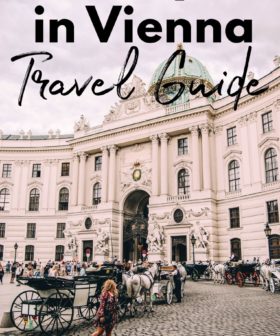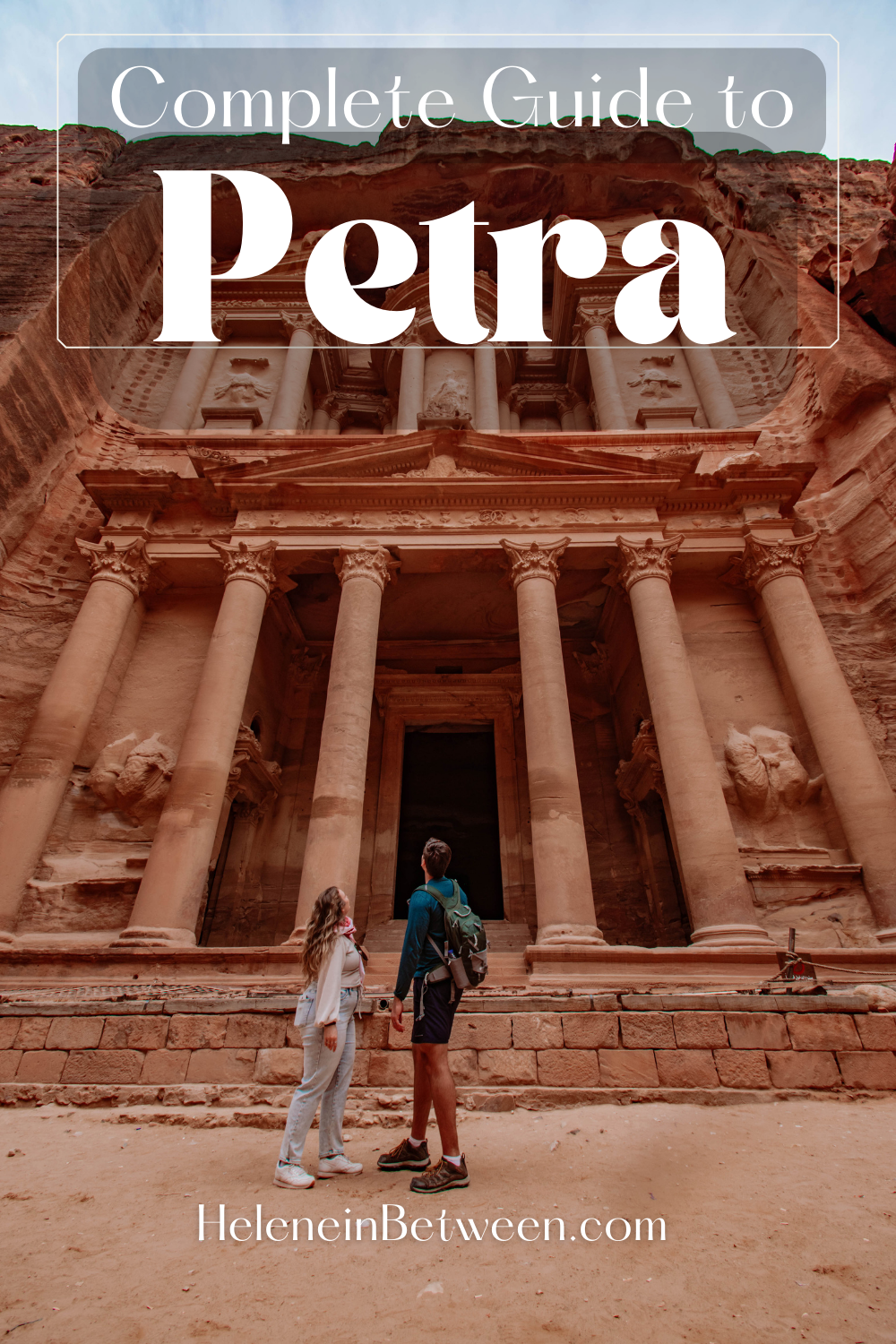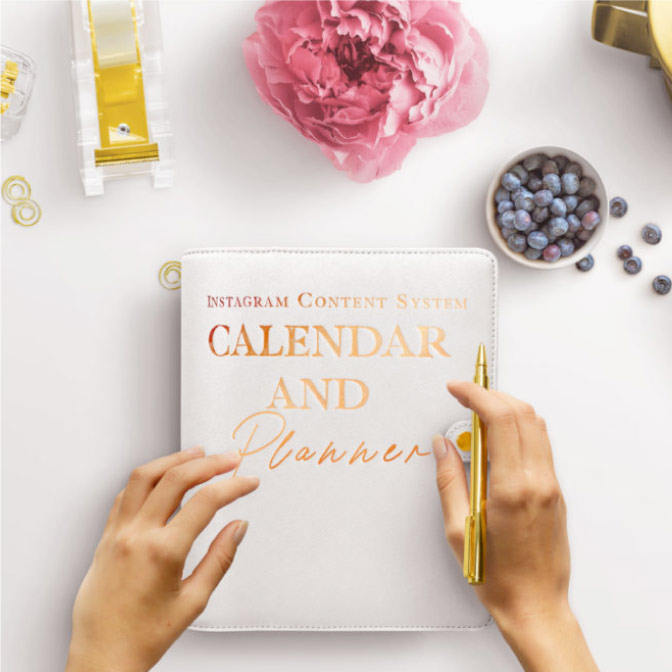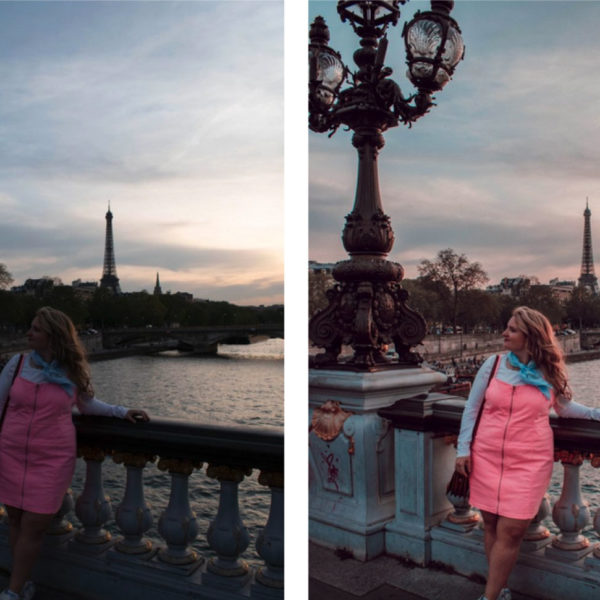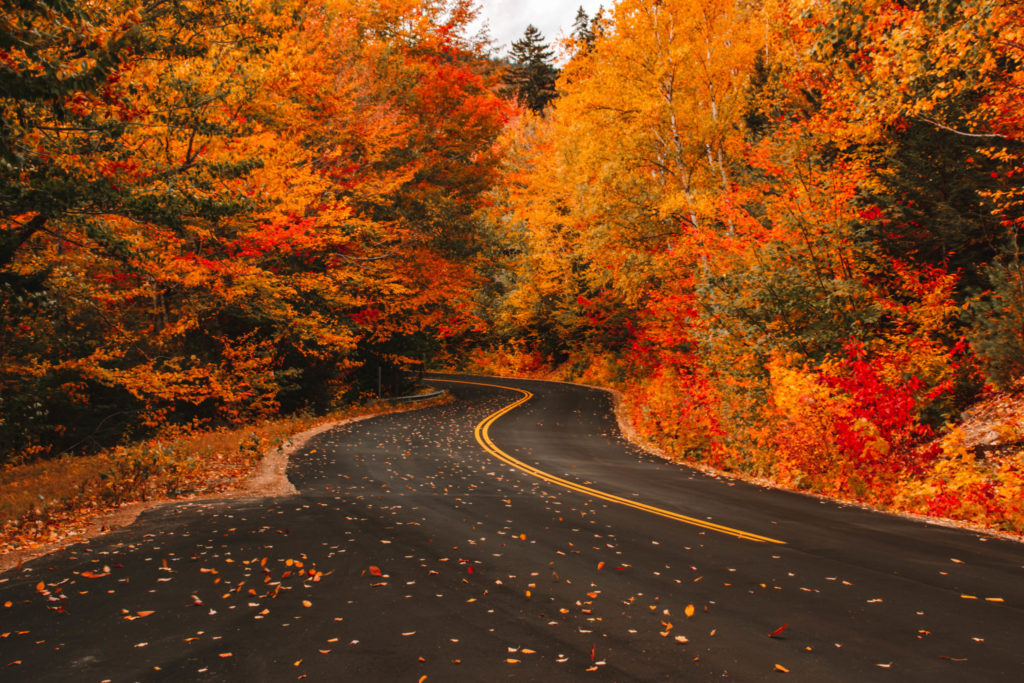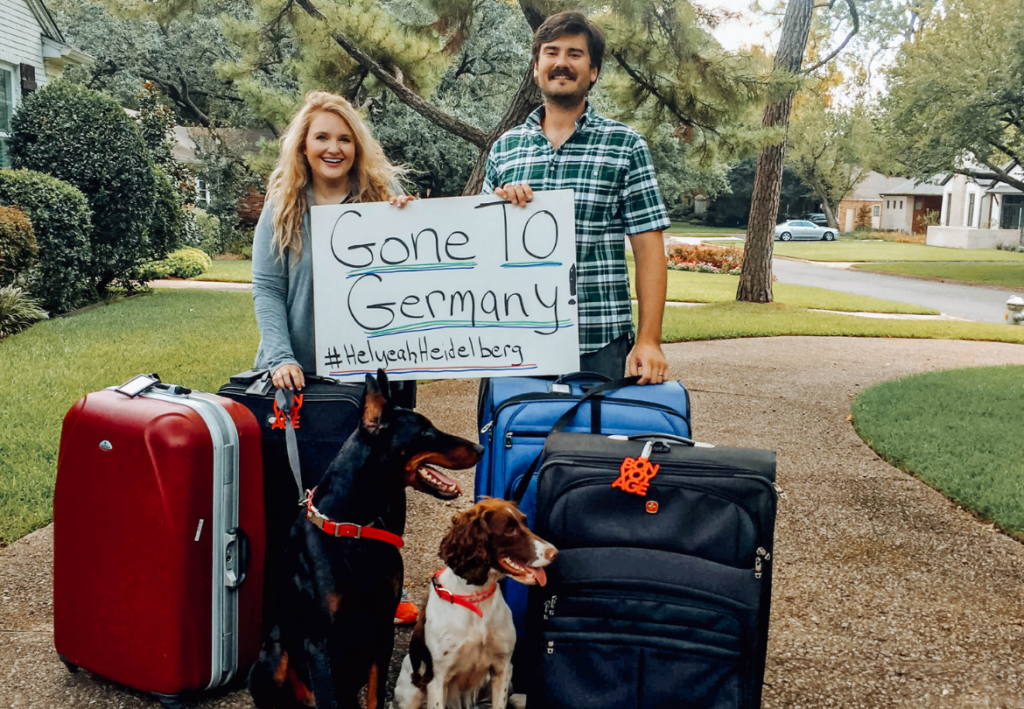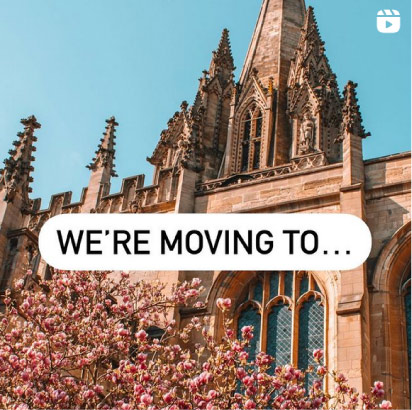Steeped in history, brimming with charm, and speckled with orange-topped roofs lies the city of Prague in the Czech Republic. Whether you love castles, beauty, or are just hankering for a good beer, Czech Republic's most popular city is one of the most interesting in Europe. I've been to Prague in the summer and winter and I find it a wonderful place to visit no matter the season. As one of Europe's best preserved cities you'll meander cobblestone streets to beautiful cathedrals, the commanding Charles Bridge, and might just crawl home from a night out at the bar. This 3 day travel guide to Prague will map out the perfect way to spend your time.
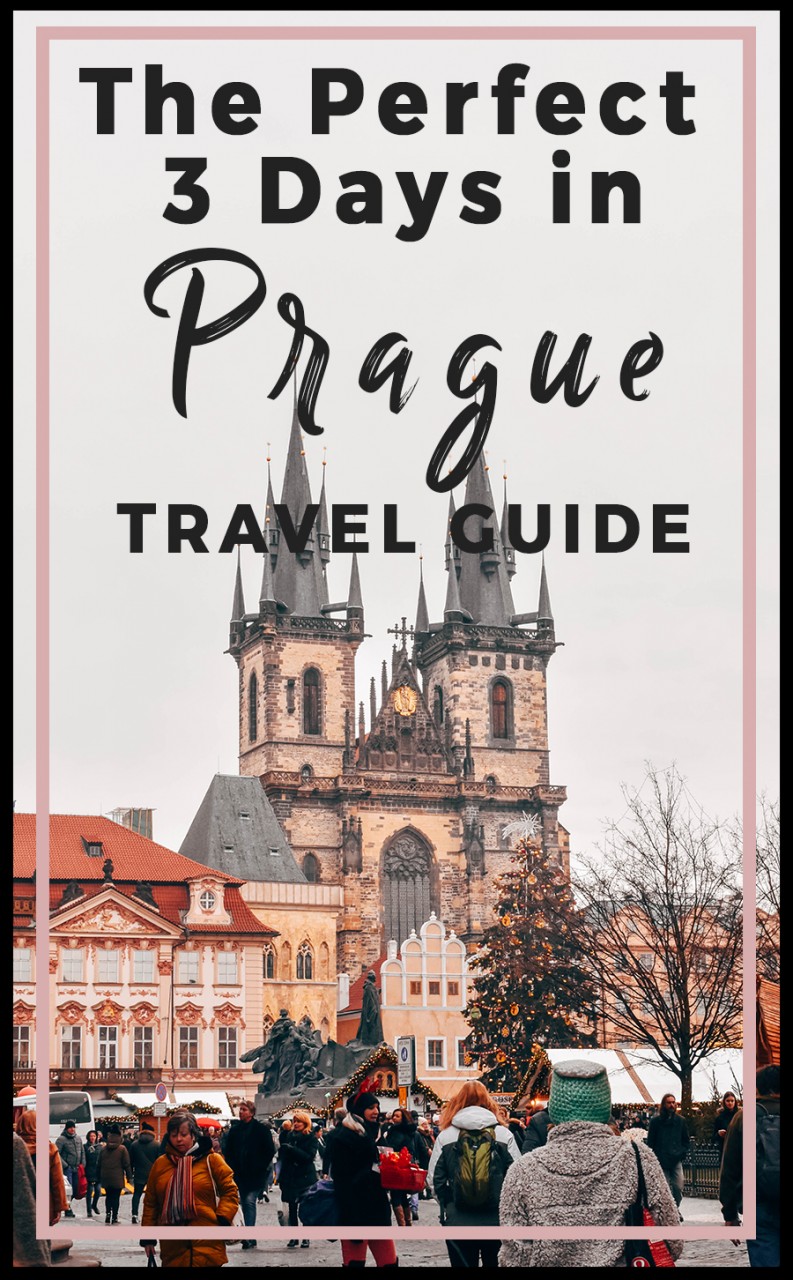
Below you can find a map of all the places discussed in this post:
The Czechs have a wonderful spirit. You get a sense that they are not just tolerating tourists, but want to show off their city. On our way to our hotel, our cab driver commented that, “tourists bring money.” And I have to agree. I think having this attitude is a great way to interact, and makes this unpretentious city all the more loveable. But what I find the most fascinating is their beer consumption – which might explain their positivity. The average Czech citizen (that includes babies and elderly) consumes 300 liters of beer a year. That's nearly an entire liter a DAY per person. They are serious about their beer (and their food, too.) They know how to have and show you a good time. Prague is the perfect place to relax, explore, and get a feel for the history of Europe.
The Perfect 3 Days in Prague Travel Guide
Where to Stay in Prague
We stayed in the absolute perfect location, just steps from the castle and walking distance to the Charles Bridge at Golden Key Hotel. Having traveled to over 80 cities this year alone, I know exactly what I like in a hotel. I want quality soaps and conditioners, a good breakfast, a comfortable bed, quiet, and easy access to the city. Golden Key Hotel nails this on every point.
While there, the staff actually sat down with me for a cup of coffee and cake and helped me make a plan for what to do in the city. My room is stunning with a chandelier, plush red velvet chairs, and a perfectly not-too-hard, not-too-soft bed. The L’Occitane products in the bathroom are lovely and I can’t hear a peep from outside. The hotel has only 25 rooms so the staff is attentive and kind.
Shoes // Sweater // Velvet Leggings
The restaurant recommendation of heading to “U Glaubicu” was the perfect choice for my family. As well as one of my favorite meals in Prague at Beseda (more on meals below!).
The hotel is 4 stars but you will receive a VIP treatment and 5 star service. You'll also get a full, hot, delicious breakfast. I looked forward to the dried fruits, cappuccinos, assortment of teas, and fresh baked breakfast cakes every morning. Don't forget to check out this jewel of a hotel since it comes from the 16th century and still retains its cellar where they now host events. You can drink Icelandic glacial water while perusing the lounge or the unique rooms. Each room is different but comfortable with the amenities you need. Quite frankly, this is one of the best hotels I've ever stayed in. Golden Key is member of Asten Hotels which is a purely Czech company. Booking direct is best and where you will find a discount.
Day 1
Let's kick things off by venturing up the hill to Prague Castle also called “Hrad.” This is the largest castle complex in the world and has been the seat of the Czech monarchs since the 9th century and the head of state still rules here. Once you reach the top you'll gaze at the rows of windows of the palace and the spires that stretch toward the sky. I suggest picking a tour based on what you'd like to see. I highly suggest getting a ticket to see St. Vitus Cathedral, the Golden Lane, St Wenceslas Chapel (the patron saint of Prague), and Basilica of St. George. I recommend buying that ticket as well as a guided tour. This hour long walking tour is only 5 euro extra and really puts the whole castle, cathedral, and the stories of Prague's monarchy into perspective.
St. Vitus is absolutely one of the highlights of Prague with so many incredible works. There's a wood carving of the city that took 10 years to craft, intricate stained glass throughout, including a rosette of the Last Judgement that is 11 meters in diameter and contains 27,000 pieces of glass, an organ that weight 20 tons, and a separate balcony and entrance for the king. It's overwhelmingly cool.
One of my favorite parts of the tour was learning about the “Defenestrations of Prague” when in 1618 the Czechs were sick and tired of being ruled by the Catholics Hapsburgs of Austria, and they threw out the local government – literally. The Protestants threw the Catholic leaders out a three story window (70 foot tall) and they somehow landed on a pile of rubbish and survived. The defenestration led to the start of the Thirty Years' War.
Don't forget to stroll the Golden Lane and see the smallest streets, tiniest doorwars, and beautiful trinkets. The lane was constructed in the 15th century when emperor Rudolf II gave the space to the guards of the castle. But the space was small, so families used stone, mud, and wood to create small spaces to live and work. The name “Golden” comes from the myth that alchemists were trying to make an “elixir of youth” but it also transformed metals into gold.
After the castle head over to the Baroque style Strahov Monastery, founded in 1120 it now contains a beautiful basilica and famous library and museum. The Basilica of Our Lady is worth a visit (as are so many churches in Prague) and boasts beautifully decorated frescoes. If you'd like to see the library and “Cabinet of Curiosities” it is interesting, but a little overpriced in my opinion and a little disappointing. You can't actually walk through the library and if you'd like to take a photo it's another 3 euros. Unlike the Trinity College Library in Dublin, you can't really get a feel for the grand space or the books since you're place so far away.
Next, amble over to the Loreto building which has the beautiful Baroque bell tower that you can hear throughout the city. If you're not tired of walking, check out sunset on Petrin Hill, a copy of the Eiffel Tower, for commanding views of the city. Climb 299 steps up to the top to see all the spires of Prague.
Pictured: The Loreto Building
After exploring the castle area, walk down the hill to “Lesser Town” or Malá Strana. Grab a bite to eat at a traditional and well priced restaurant, Beseda. Walk the streets and look up at the ancient buildings and burger houses. Go into St. Nicholas Church for extravagant pink marble and a Baroque organ. This is the largest of Prague's churches founded by the Jesuits. A few steps away is the Church of Our Lady Victorious and The Infant of Prague. Inside you'll find “The Infant of Prague,” a small ornate statue that attracts visitors worldwide since it's said that a monk had a vision of baby Jesus and then made a wood figure of a child.
Pictured: St. Nicholas Church
As night falls stroll the Charles Bridge to see the warm lights glaze over the statues on the stone bridge and illuminate the Vltava River. The construction of the bridge dates from Charles IV, King of Bohemia and Holy Roman Emperor. Legend has it that he planned out every detail of the bridge, including the 30 statues.
Day 2
Eat a hearty breakfast, there's loads more walking today. Take the “Royal Way” by starting in front of the incredible beautiful Municipal House (my personal favorite building in Prague) for the walk that Czech Kings took for coronation ceremonies. You'll pass by the spectacular Art Nouveau style Municipal House. Don't forget to step in to see the oldest bar in Prague and the elaborately decorated concert and exhibition venue.
As you walk don't forget to “look up” as the hotel staff told me, at the lovely detailed architecture you'll see everywhere you go. Hike over to The Old Town Square to see the beautiful and mesmerizing astronomical clock, the Church of Our Lady Before Tyn, City Hall, and St. Nicholas Church.
Constructed in 1410 the Astronomical Clock in Prague has a unique and harrowing history. The legend says that the clock maker Hanuš was blinded on the order of the Prague Councillors so that he could not repeat his work. So, he disabled the clock, and no one was able to repair it for the next hundred years. Finally, in 1552 it was repaired by Taborský and Klokotská. The mechanisms of the clock from over 600 years ago are still functional today. Every hour, on the hour you can watch to see the small wooden figures move.
The Church of Our Lady is impressive outside, with it's Gothic double towers that dominate the square. The inside is not as impressive. But that's no problem because just a few steps away is St. Nicholas Church from the Old Town Square– not to be confused with the OTHER St. Nicholas Church in Lesser Town Square. The pretty white and green building has a lovely chandelier and is richly decorated with marble interior.
To get the best view of the square you can take the elevator up in City Hall. If you'd like, check out the pink and white Kinsky Palace, once a palace, now home to the Kinsky's family's library and the National Gallery.
From here, walk the most expensive shopping street in Prague, Parizska. After passing Dior, Chanel, and Louis Vuitton you'll start to see synagogues. We've now entered the Jewish Quarter or “Josefov”. I highly recommend planning some time here since this area was undamaged in World War II. In fact, Hitler decided to preserve this areas to be a, “museum of an extinct race.” Where people could come to see how Jews used to live and objects they collected. Many rare items were transported to Prague for safekeeping.
Pictured: Parizska street
The Jewish Museum has an extensive collection of art and belongings gathered from Bohemia and Moravia. Make sure to visit the Old Jewish cemetery dating back to 1478 as Europe's oldest surviving Jewish cemetery. You'll see more than 12,000 graves where over 100,000 people are buried. The close graves echo back to the fact that Jewish people in Prague were not allowed to bury their dead outside the ghetto, so they had to put graves on top of each other. Step inside one of the Synagogues: Pinkas, Klausen, High, Maisel or Spanish. To me, the most moving is the Pinkas Synagogue which has 77,297 names of the Jews who didn't survive concentration camps from this area.
After all that walking it's time to rest your feet. Enjoy dinner at a pub, or if you'd like, go to a concert at a church. Concert tickets are pricey, but well worth it for music in an astounding church. To get a ticket head to the Via Musica Shop in the center of the Old Town, as you go into the Gothic cathedral to price tickets.
Day 3
The John Lennon Wall is an interesting and significant piece of Prague's history and not one to miss. Many might think of it as a simple graffiti wall, but it means much more than that. Since the 1980s people have filled the all with art, names, and Beatles's song lyrics. In 1988 the wall was used by the Czechs to display their anger against communism. Today it's a symbol of love and peace.
From there meander to Kampa Island just off the Charles Bridge. This is a great place to take in the bridge and get a different view.
Now, it's time to see the bridge in the light this time. The Charles Bridge is one of the most interesting and was finished back in 1402. Much like the other places in Prague, the bridge has its own legend. It's said that construction began on Charles Bridge at 5:31am on July, 9 1357 and the first stone was laid by Charles IV himself. This timing was important because he believed in numerology and this specific time formed a palindrome (1357 9, 7 5:31) and would transfer more strength to the bridge itself. I think old Charles might have been right since this is one of the most visited bridges in all the world. Make sure to tough the statue of St. John Nepomuk and make a wish to return to Prague.
Since we've most likely had our fill of old history, let's focus on something more modern and new. Walk over the bridge and go to the Dancing House, aka Fred and Ginger. A unique architectural style it was controversial at the time, since it's a stark contrast to the beautiful Baroque buildings nearby.
Grab a pastry from a nearby bakery to fuel up as you walk over to the modern and moving art: the Head of Franz Kafka. This cool, futuristic, silver sculpture depicts writer Kafka as his head turns.
If you're tired of walking take a tram ride (it's cheap) or a cab (cheap and easier) to St. Wenceslas Square. There's a gargantuan statue of King Wenceslas riding a horse. Wenceslas is venerated as being a good and just king. In 935 his own brother plotted to kill him, and now he's considered to be a martyr, saint, and even has his own Christmas carol, “Good King Wenceslas.” This is also a great place to go shopping.
If you have extra tie, I suggest heading to the Old Town and checking out a Free walking tour. They happen about every 15 minutes in multiple languages.
What to Eat in Prague
Trdelník – You can't go to Prague and NOT have a Trdelník. Dough is wrapped around a stick then grilled on an open flame and sprinkled with sugar and cinnamon. They are cheap and delicious.
Beer – It would just be flat out rude not to have beer in Prague. There are plenty of wonderful pubs and bars all around. You can't go wrong.
Beseda – One of my favorite meals while in Prague was at Beseda. Serving traditional Czech food this restaurant is classy and well priced and the meat is tender and delicious. Friendly staff and great wine pairings.
Meat and Greet – “The best burger I've had abroad.” These words were uttered by my husband profoundly after wiping his lips with a napkin. The burgers were great and the sweet potato fries were divine. Skip the onion rings.
Alebrijes bar Bar – I didn't eat here (I'm anti Mexican food in anywhere but Mexico and the southern US) but EVERYONE told me this place is legit. So, I'm adding it to my list in case you're hankering for some chips and salsa. I'm told the tacos are very good.
Bohemian boards and brews – This lively cafe is a perfect spot to relax, play games, and eat. Another nice spot is La Boheme Cafe.
Slovak Haluski – Potato cabbage bacon mix is a very traditional Czech dish. We went to Prague during Christmas so each market had their own version. For me, it's a hard pass! I couldn't even finish my bowl, but it might suit your taste buds.
Marthy’s Kitchen – start your day off right with a hearty breakfast here.
U Glaubicu – good beer and traditional Czech cuisine in a 700-year-old cellar.
Prague is a city that captures your heart and attention with it's monumental architecture, history, and character. It's a city you can keep coming back to and discover more and more along the way. The maze of cobblestone lanes and tall steeples is perfect for those that like to amble around, getting a feel for the city. Prague offers something for every kind of traveler and tourist and I definitely wished to come back soon!
Check out my first post on Prague and some of the crazier happenings along the way.
I made a quick video to show you Prague highlights in 3 days:
Learn to travel and live on your own terms!

Join over 135,000 others who want to gain the knowledge and experience of seeing the world on their own terms. I am a full time travel blogger and want to help you live your dreams, save money, and travel more. Get access to exclusive content, freebies, updates, and more when you sign up.

